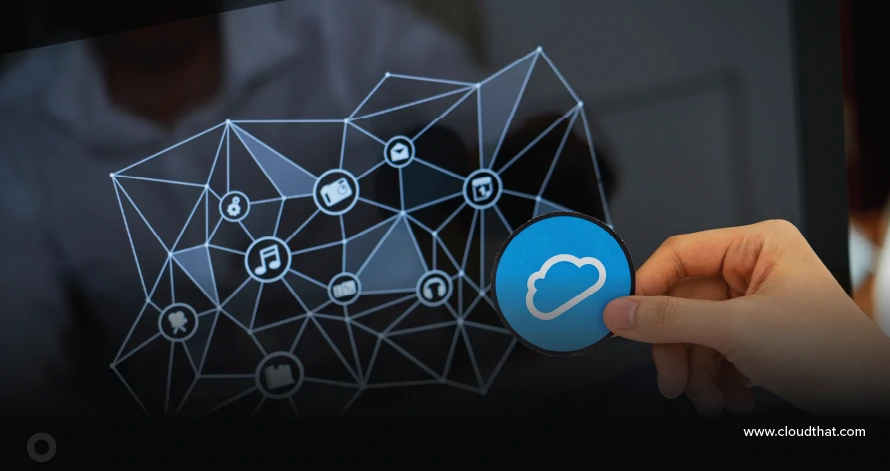|
Voiced by Amazon Polly |
Introduction of DevOps
DevOps is a software development methodology emphasizing collaboration, communication, and integration between development and operations teams to release high-quality software more quickly and efficiently. The term “DevOps” is a combination of “Development” and “Operations.”
DevOps aims to break down the traditional silos between development and operations teams, enabling them to work together in a more cohesive and integrated way. This collaboration is achieved through tools, processes, and practices that facilitate team communication and coordination.
DevOps also emphasizes automation, continuous integration, and continuous delivery, which enable developers to release software updates more frequently and with greater reliability. By automating repetitive tasks, such as testing and deployment, DevOps helps to reduce the risk of errors and improve the quality of the software.
Overall, DevOps represents a cultural shift in how software is developed and deployed, focusing on collaboration, automation, and continuous improvement. It has become increasingly popular in recent years as companies seek to keep pace with the demands of the modern software development landscape.
Pioneers in Cloud Consulting & Migration Services
- Reduced infrastructural costs
- Accelerated application deployment
DevOps Pipeline
The DevOps pipeline, or the CI/CD pipeline, is a set of processes and tools to build, test, and deploy software applications. The pipeline consists of stages or phases that allow developers and operations teams to work together to automate the software delivery process, from code commit to deployment.
The pipeline typically includes the following stages:
- Develop /Code Commit: The first stage in the pipeline is where developers commit code changes to a version control system (VCS), such as Git. This triggers the pipeline and initiates the build process.
- Build: The code is then built into a deployable artifact, such as an executable file or a container image. The build process typically includes compiling the code, running automated tests, and packaging the code into an artifact that can be deployed.
- Test: The built artifact is then tested for quality and functionality. This stage can include unit, integration, performance, and security tests. Automated testing is an essential part of the pipeline as it helps to catch errors early in the development cycle.
- Deploy: Once the artifact passes all tests, it is deployed to a staging environment for further testing and validation. This stage can also include infrastructure provisioning, configuration management, and other deployment-related tasks.
- Release: Once the artifact has been tested and validated in the staging environment, it can be released to production. The release stage can include additional testing and validation, such as A/B testing or canary releases, to ensure a smooth deployment.
- Monitor: The final stage of the pipeline involves monitoring the application in production. This includes monitoring performance, availability, and security and responding to any issues or incidents.
Methods to secure DevOps Pipeline for Application Security
DevOps has become the de facto standard for software development and deployment in today’s fast-paced and constantly evolving technology landscape. It is a software development methodology emphasizing collaboration, communication, and integration between development and operations teams to release high-quality software more quickly and efficiently.
However, as the speed of development and deployment increases, so does the risk of security vulnerabilities in the application. Securing the DevOps pipeline is essential to ensure the security of the application throughout its lifecycle. In this blog, we’ll discuss some of the best practices for application security in the DevOps pipeline.
- Automate Security Testing
Automated security testing is an essential practice in the DevOps pipeline. By automating security testing, developers can identify vulnerabilities and threats early in the development cycle, which reduces the risk of security breaches. The use of tools such as static code analysis, dynamic application security testing, and vulnerability scanning can help automate security testing.
- Implement Secure Coding Practices
Secure coding practices involve developing code that is free from security vulnerabilities. These practices include using secure coding guidelines, avoiding common mistakes, and adhering to the best data handling and storage practices. Implementing secure coding practices from the beginning of the development cycle can reduce the risk of security vulnerabilities and ensure the security of the application.
- Use Container Security
Containers are a popular technology in the DevOps pipeline as they allow developers to create and deploy applications more efficiently. However, containers can also introduce security risks if not managed properly. Using container security practices such as scanning images for vulnerabilities, implementing container hardening, and implementing access controls can help mitigate container security risks.
- Monitor Applications
Monitoring applications in production is an essential practice in the DevOps pipeline. By monitoring applications, developers can identify and respond to security incidents quickly. Tools like intrusion detection systems, log monitoring, and real-time alerting can help monitor applications and identify security incidents.
- Implement Access Controls
Access controls restrict access to sensitive data and resources to authorized personnel only. Implementing access controls throughout the DevOps pipeline can reduce the risk of unauthorized access to sensitive data and resources. Access controls can be implemented using role-based access control, attribute-based access control, and multi-factor authentication.
- Continuous Security Training
Continuous security training involves educating developers, operations personnel, and other stakeholders about security best practices and the latest security threats. Continuous security training can help ensure that everyone involved in the DevOps pipeline knows the security risks and how to respond to security incidents.
In conclusion, securing the DevOps pipeline is essential to ensure the security of the application throughout its lifecycle. By implementing these best practices for application security, developers and operations teams can reduce the risk of security vulnerabilities and ensure the security of the application. The DevOps pipeline can be made more secure by automating security testing, implementing secure coding practices, using container security, monitoring applications, implementing access controls, and providing continuous security training.
Conclusion
Securing the DevOps pipeline is critical to deploying software applications safely and securely. A secure DevOps pipeline involves using automation, infrastructure-as-code, and secure coding practices to minimize vulnerabilities and reduce the risk of security breaches.
Implementing continuous security testing, multi-factor authentication, and encryption can help protect sensitive data and prevent unauthorized access. Additionally, implementing security monitoring and incident response tools can help detect and respond to security incidents in real time.
By the above best practices, you can help ensure your DevOps pipeline is secure, and your applications are deployed safely and securely. In today’s rapidly evolving threat landscape, securing the DevOps pipeline must be a top priority for any organization looking to release high-quality software quickly and efficiently.
Freedom Month Sale — Discounts That Set You Free!
- Up to 80% OFF AWS Courses
- Up to 30% OFF Microsoft Certs
- Ends August 31
About CloudThat
CloudThat is an award-winning company and the first in India to offer cloud training and consulting services worldwide. As a Microsoft Solutions Partner, AWS Advanced Tier Training Partner, and Google Cloud Platform Partner, CloudThat has empowered over 850,000 professionals through 600+ cloud certifications winning global recognition for its training excellence including 20 MCT Trainers in Microsoft’s Global Top 100 and an impressive 12 awards in the last 8 years. CloudThat specializes in Cloud Migration, Data Platforms, DevOps, IoT, and cutting-edge technologies like Gen AI & AI/ML. It has delivered over 500 consulting projects for 250+ organizations in 30+ countries as it continues to empower professionals and enterprises to thrive in the digital-first world.
FAQs
1. What are the benefits of a secure DevOps pipeline?
ANS: – A secure DevOps pipeline helps organizations release high-quality software more quickly and reliably. A secure pipeline can help protect sensitive data and prevent unauthorized access by minimizing vulnerabilities and reducing the risk of security breaches.
2. What are some common security risks in the DevOps pipeline?
ANS: – Common security risks in the DevOps pipeline include vulnerabilities introduced through insecure coding practices, insecure configurations, and a lack of proper access controls. Additionally, unauthorized access to sensitive data and systems can pose a significant security risk.
3. How can I ensure that my DevOps team follows secure coding practices?
ANS: – To ensure that your DevOps team follows secure coding practices, you should provide training and education on best practices. You should also implement code review processes to catch vulnerabilities and ensure that secure coding practices are consistently applied across the codebase.

WRITTEN BY Minhaj Kadri
Minhaj is a Research Associate-DevOps in CloudThat and a certified professional on AWS. She has demonstrated a history of architecting highly secure, scalable, fault-tolerant, cost-effective infrastructure on multi-cloud platforms AWS, Azure, and GCP.


 Login
Login


 March 13, 2023
March 13, 2023 PREV
PREV











Comments